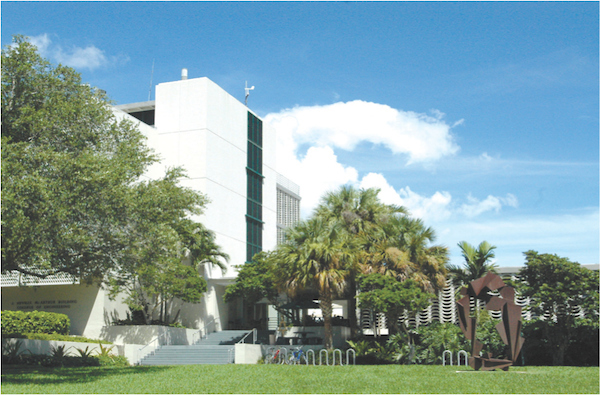The University of Miami evaluates success with respect to student achievement consistent with its mission. The University uses multiple measures to evaluate student achievement.
Student Success
Graduation Rate
The University utilizes the IPEDS six-year graduation rate as a measure of student success because it indicates the degree to which entering first-year students are successful in achieving their educational goals at the University by attaining a bachelor's degree. The University's goal is to increase the six-year graduation rate to 89.0% by 2030.
| 4-Year Graduation Rate |
69.8% |
72.9% |
72.1% |
73.1% |
74.0% |
| 5-Year Graduation Rate |
80.4% |
81.5% |
81.8% |
81.8% |
82.6% |
Disaggregated graduation rates by gender, race/ethnicity, and financial aid status are available on the Institutional Research and Strategic Analytics website.
Retention Rate
The University utilizes the federal retention rate as a measure of student success because it indicates the degree to which entering first-year students are successful in transitioning from high school to the University by completing their first year and returning for their second year. The University's goal is to increase the retention rate to 95.0% by 2030.
Post-Graduation Outcomes
The University also measures student achievement in terms of how successful students are in fulfilling their post-graduation plans. The Toppel Career Center collects data on students' post-graduation plans each year. The University's goal is that the percent of students securing full-time employment or continuing their education will exceed the national average for Doctoral-Very High Research (R1) universities reported by the National Association of Colleges and Employers (NACE).
The data on the Class of 2022, the most recent data available, demonstrate that UM students are successful in achieving post-graduation outcomes: 95% of UM students had secured post-graduate plans within six months of graduation compared to an average of 74% at R1 Universities.
School of Law: Bar Exam
The University’s School of Law measures student achievement in its JD program using the weighted average of the first-time bar passage rate provided by the American Bar Association (ABA). The University’s goal is to achieve a weighted average that exceeds the annual weighted average for all ABA-approved law schools.
In 2022, the most recent data available, the University of Miami's weighted average was 69.84% compared to 66.36% for all ABA-approved law schools.
Miller School of Medicine: Placement Rate
The University’s School of Medicine measures student achievement in its MD program using its placement rate from the National Resident Matching Program (NRMP). In the fourth year of medical school, students find out from the NRMP where they will be completing their medical residency. The University uses this measure because the placement rate is a strong indicator of the medical community’s evaluation of the quality of its graduates and their preparation and readiness for successful medical careers. Completion of a four-year medical residency after earning a Doctor of Medicine degree is required for professional licensure as a Medical Doctor. The University’s goal is to exceed the national placement rate.
In 2023, the University’s placement rate was 98% which was the same as the placement rate nationally.
School of Nursing and Health Studies: NCLEX Exam
The University’s School of Nursing and Health Studies measures student achievement in its undergraduate nursing programs using the average score on the National Council Licensure Examination (NCLEX). The University’s goal is to exceed the annual state (Florida) and national average passage rates on the exam for first-time, US-educated candidates from baccalaureate programs.
In 2022, the most recent data available, the University of Miami's passage rate was 94.3% compared to 77.5% for Florida and 82.3% nationally.
For information on the programs offered by the University's colleges and schools, check the links below.
















